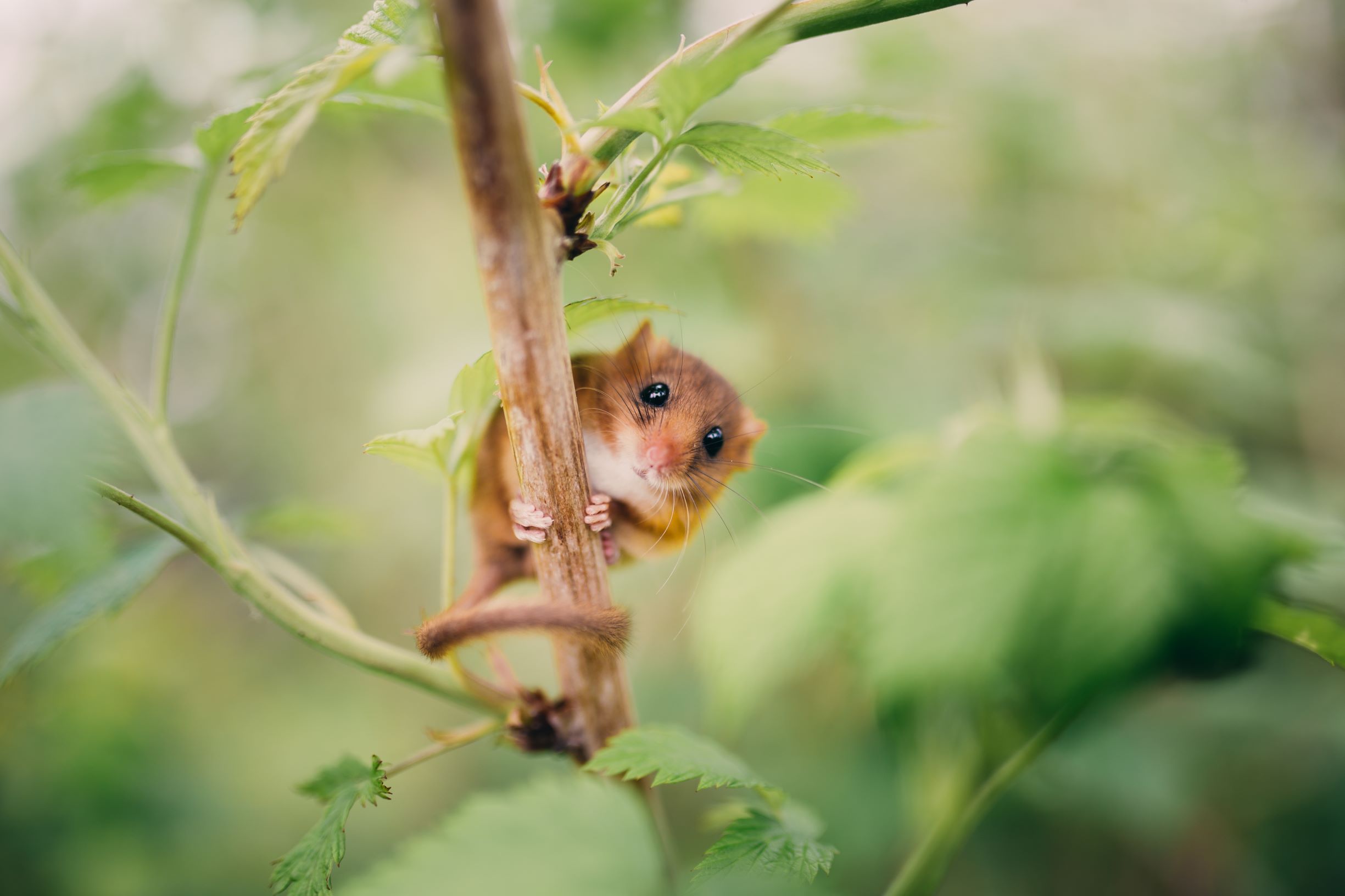The Hazel Dormouse UK population has declined by half in the past 20 years. Climate change, bad woodland management practices and habitat fragmentation due to the loss of hedgerows to farming practices, are among the main causes of the decline in this elusive native UK species.

The Isle of Wight woodlands hosts a large population of dormouse and plays a huge part in the push to save this iconic UK species.
The People’s Trust for Endangered Species (PTES) lead the battle to bring our most threatened species in the UK and around the world back from the brink of extinction, including our most beloved hazel dormouse. They run a course every year on the Isle of Wight that shows exactly how woodland management practices such as retaining woodland understory, planting trees like Hazel Corylus avellana where the dormice nest, feed, and raise their young, woodland ride creation and widening to promote food resource, staggering and rotating coppicing of coups to allow light in the understory and to promote variety in vegetation age in woodlands, and many other factors in the ultimate goal of reversing the decline of Hazel Dormouse and promoting recovery in British woodlands.
Hazel Dormice truly are what they eat. Supposedly, this species was first given its name when they were found in hazel coppices by hazel coppice-workers, who were known then to occasionally keep them as pets.
Hazel is utilised as a source of food and for nesting habitat to raise young. Woodlands on the Isle of Wight are managed so that the understories are rife with hazel coppice and other fruiting and flowering plant species like Honeysuckle Lonicera periclymenum and Bramble Rubus fruticosus. This creates a plethora of food source for the local populations of dormouse that reside on the island. The implementation of woodland rides creates an opportunity for woodland edge species to grow and prevents over-shading of the woodland shrub layer.
Hazel Dormouse is commonly referred to as a ‘woodland edge specialist’, due to its need for a higher diets consisting of fruits, nuts, aphids and other insects as it cannot digest cellulose.
An adult female dormouse being weighed and checked before rerelease as part of a national monitoring programme.
Unfortunately the average woodland in the UK isn’t able to sustain this level of diversity in food resource and nesting opportunity, due to the problem we face with grazing deer on the mainland. The constant pressure of woodland plant species predated upon by non-native herbivores means that food resource, branch connections for dispersal and movement throughout the woodland and the opportunity to nest and raise young becomes more difficult, sometimes impossible, to obtain.
Coupled with the modern farmland practice of hedgerow removal and thus connections to other woodlands, expanding human settlement encroaching on woodlands and hedgerows, unsympathetic woodland management practices and climate change, this species is dying out in mainland UK.
A new-born “pink” Hazel Dormouse in the nest
Interesting fact: Hazel Dormouse spend an estimated 75% of their life sleeping! What charming creatures they are.

